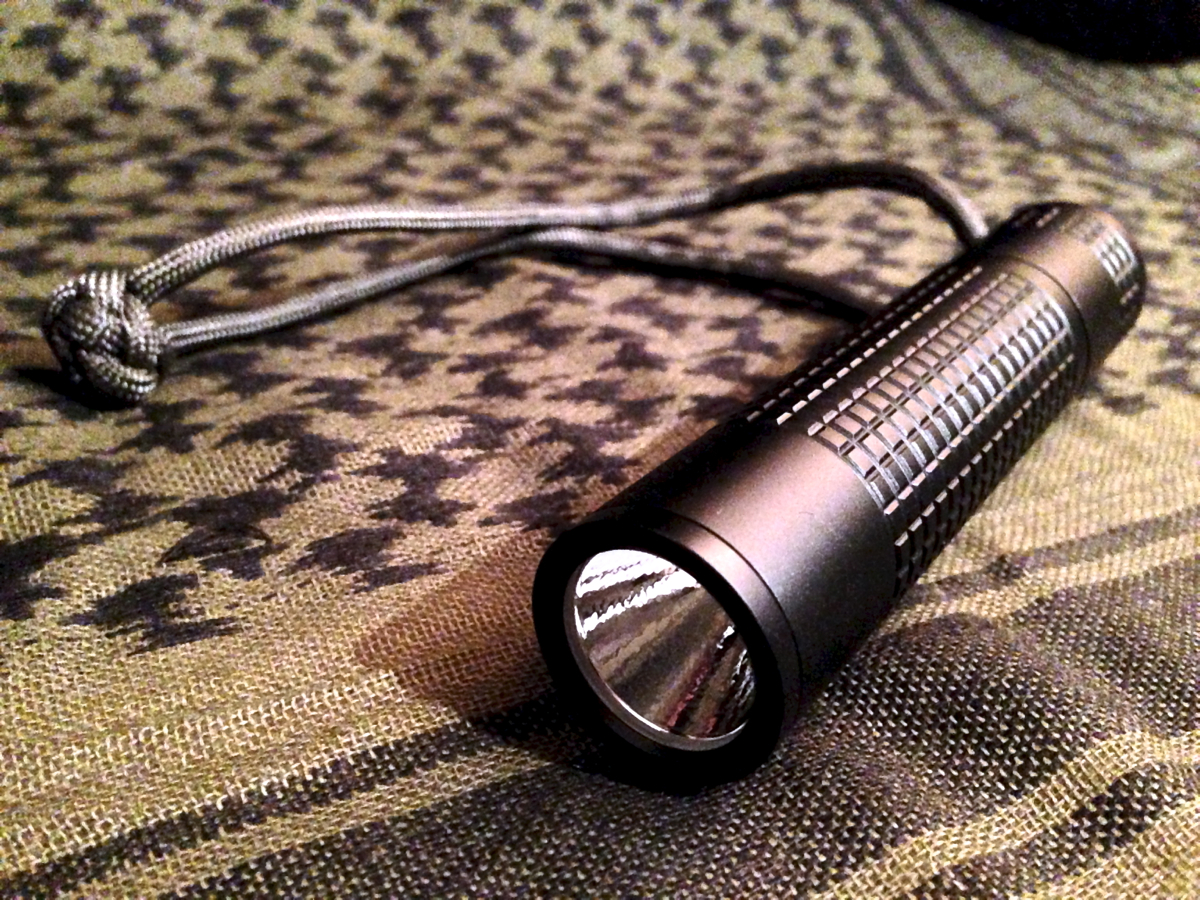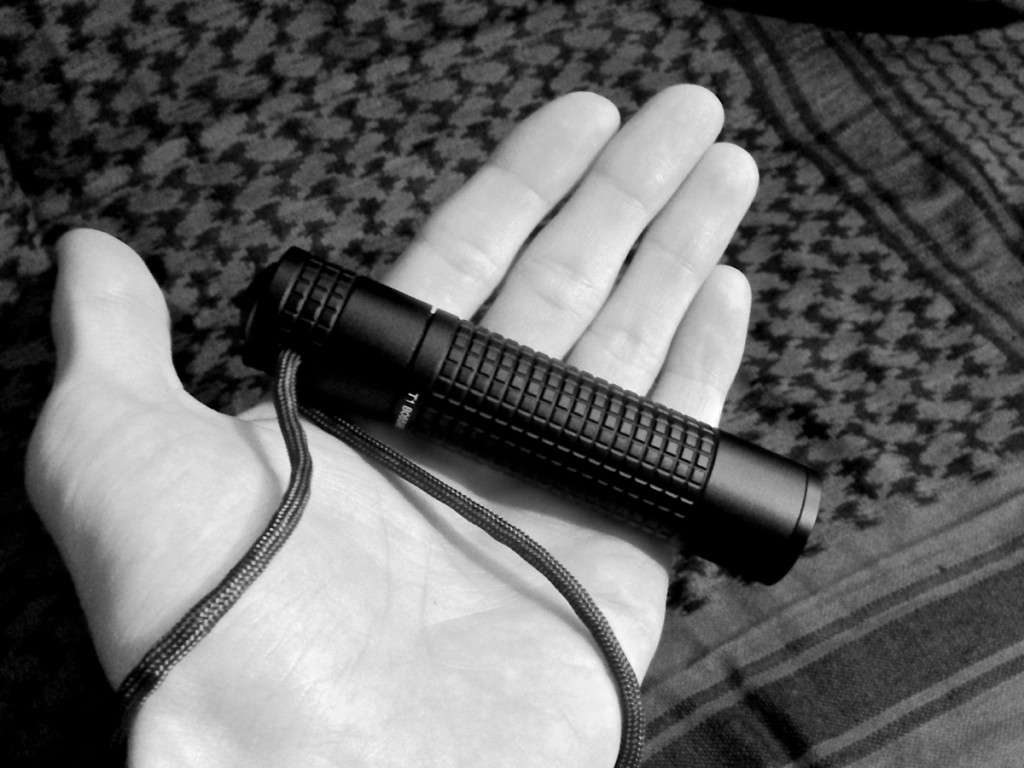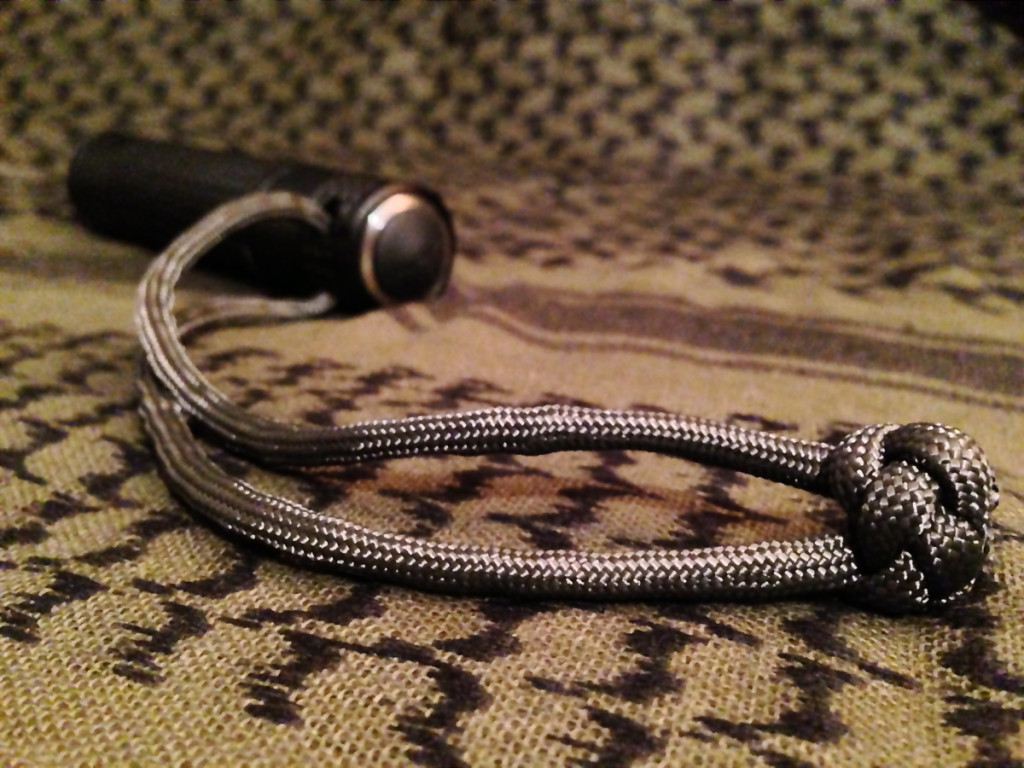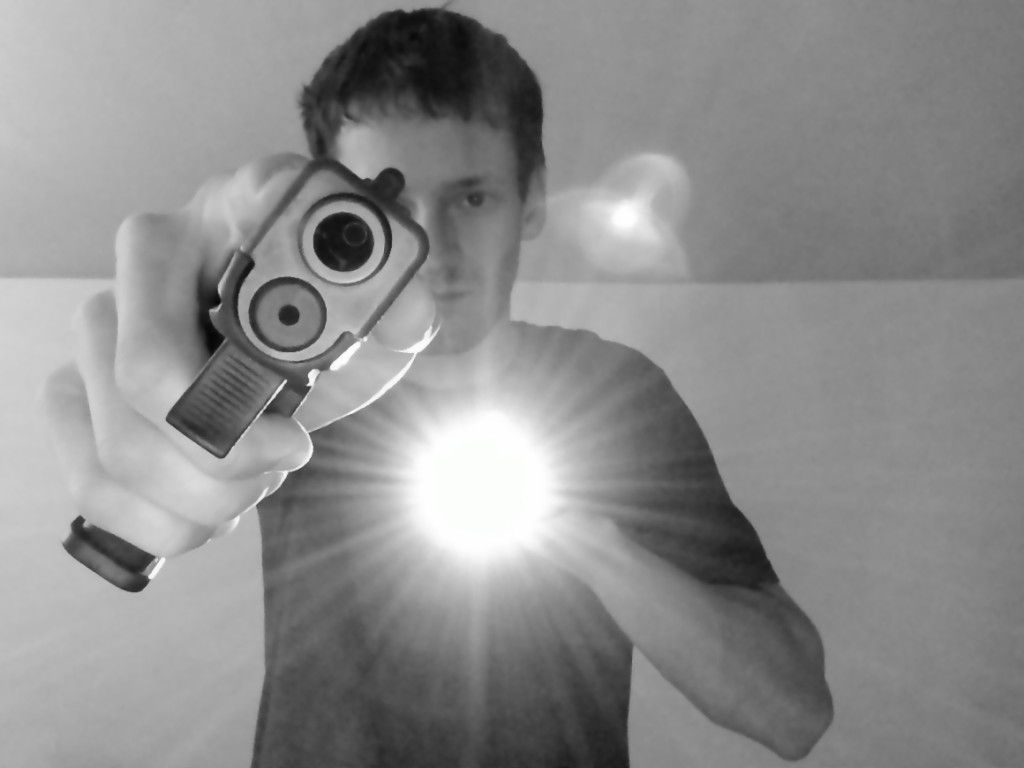From checking out what just went ‘ribbit‘ under-foot in the yard, to illuminating a gunfight, flashlights can come in handy almost every single day of anyone’s life. Whether you’re an outdoorsman or a homebody, work a blue collar job or a white collar job, we would all take advantage of it, if we could have a flashlight materialize in-hand whenever we need to illuminate something for a second. Most of us probably don’t even think about it every time we use our 4″ cellphone screen to make our way across our bedroom after everyone else is asleep, but we all do it.
It may not be possible to have a flashlight materialize in hand every time we need some light, but its less of a hassle to carry one all the time than most people probably think. Sure, like anything else you carry every day, it’s a lifestyle choice, but it’s not as big a deal as you think. You sure as hell never leave home without your cell phone, which is heavier and larger than any flashlight you’d carry daily. The iPhone 5 weighs 4oz. The Samsung POS…erm…Galaxy weighs 4.6oz. The heaviest flashlights for this purpose are going to weight less than the POS, and the lighter ones weigh half that. Once you adjust to having a flashlight all the time, it’s no more hassle than a cell phone, and you get used to even having it in your pocket around the house.
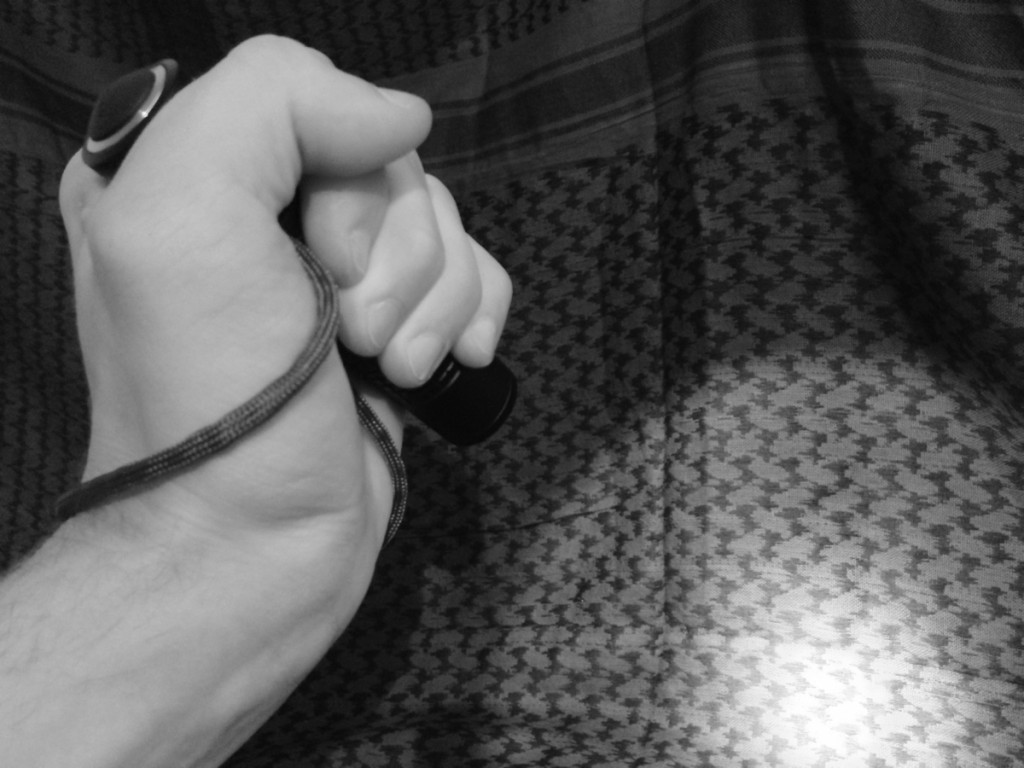
The first thing you should do if figure out what you’re going to do with your flashlight. If you don’t have a need to use it for any activities that might get your adrenaline flowing (for good or bad reasons), then go small. Specifically, go with the Inova X1. I spent a year carrying the X1 every day without fail, and loved it. At 55 lumens, its brighter setting was great for all your usual tasks, and the 6-lumen low setting was bright enough to keep me from tripping over shit on my way to bed, while being dim enough not to wake anyone up. The size of the X1 is its defining quality, but it can be good or bad depending on your needs. As a small light, I barely noticed it in my pocket, however it was hard to hold and operate in a tactical grip because it was too small. You might not care about that if you don’t carry a defensive weapon, of if you just need a flashlight for glovebox duty, but for someone that carries a gun, the X1 is too small for EDC duty.
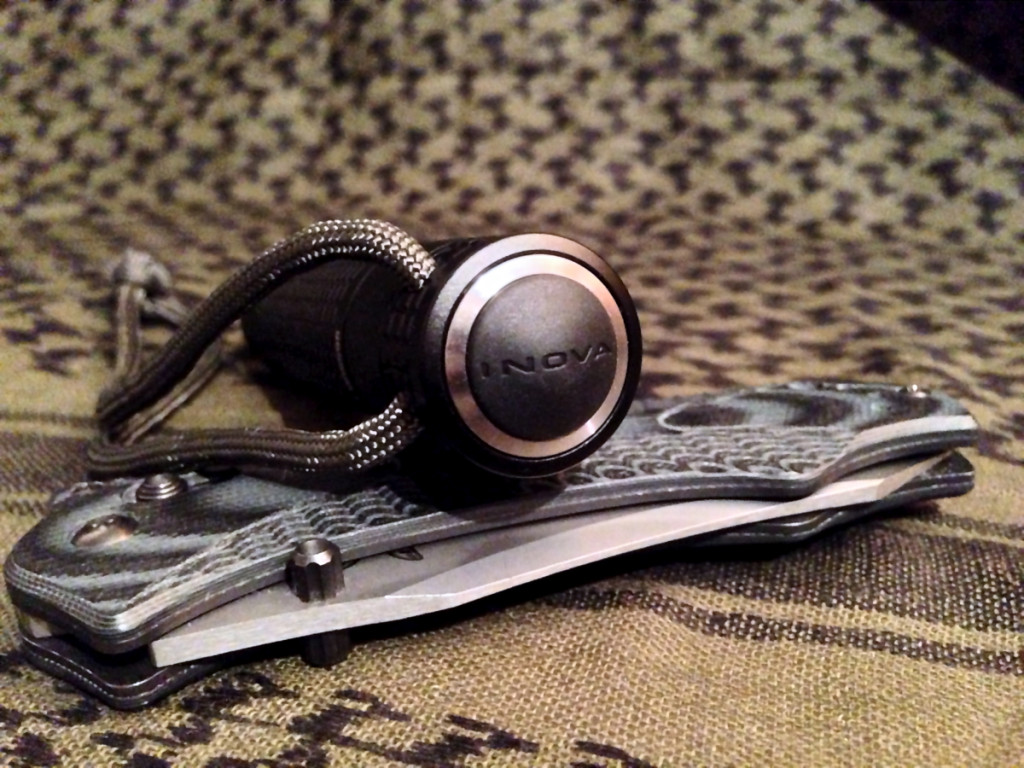
. The T1 is my new choice for EDC and it has some distinct advantages, for general use and the super leet gunfighter…like me. First though, the bad. It’s bigger and its heavier. At 4oz, it’s no heavier than your smartphone, but it’s twice the weight of the X1, and it’s definitely much bulkier (this is relative since the X1 is tiny). Besides the size and weight increase, the T1 out-shines the X1 in every way… and if you already carry a 30oz Glock, a 9oz spare mag, a 4.8oz Benchmade Rift
, 5oz worth of keys, a 4oz phone, a 4oz wallet, and 7 neatly folded tissues, who gives a shit about another 4oz…seriously.
Ergonomics / Look and Feel
Inova makes some pretty beautiful products, to my eyes. Their flashlights are sort of like Glocks. They’re beauty is in their design efficiency. They aren’t showy, or particularly tactical looking. They simply have a nice anodized finish and efficient dimensions. The T1 is no exception. It’s a millimeter short of an inch wide, from bezel to end cap, save for the knurling that is deeply etched into the body and the rear of the end cap, fully surrounding the flashlight. The textured section of the body is well-positioned, with the texturing right where your fingers want to be for holding the light in a tactical grip.
The whole light is made from milled aluminum with a matte black finish. The rear face of the end cap has a nice looking ring that appears as brushed aluminum, and is the only bit of the flashlight that exists for looks alone. In the middle of the silver ring is the rubber click button measuring 5/8 of an inch in diameter and bearing the Inova logo. When pressed, the button travels a firm 1/8″ and rewards you with a very positive, tactile click. For temporary-on operation, you need only depress the button 1mm for light, but it doesn’t click on until the bottom of its travel, making it easy to use temporary-on without inadvertently clicking the light on.
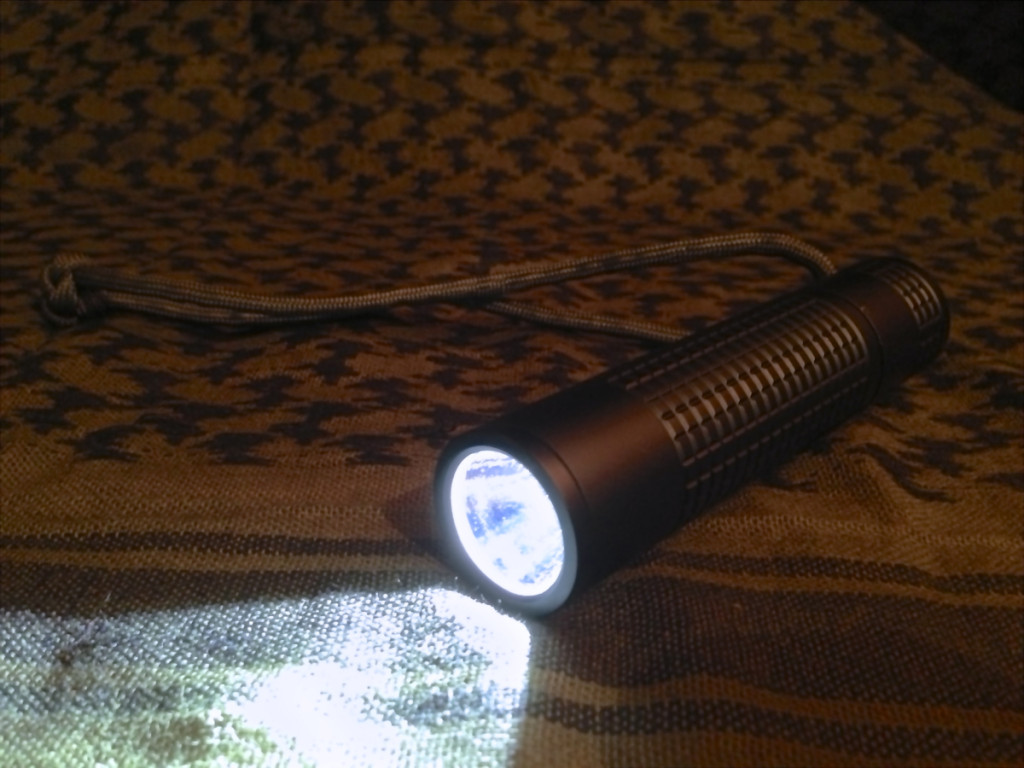
Brightness / Beam
200 lumens is really a sweet spot for lights intended for the type of usage range that the T1 is designed for. I have 300-lumen Streamlight TLR-1s LED weapon lights on both my home defense guns and, if I’m frank, they’re as likely to blind me with their reflection as they are to help me shoot/blind a bad guy. If you’ve practiced, it’s not too hard to avoid that problem, but for ‘all-purpose with a chance of tactical,’ I’m a fan of 200 lumens. You can still wash out someone’s vision if you shine it at them, but white walls don’t sear your eyeballs, and that’s always for the best!
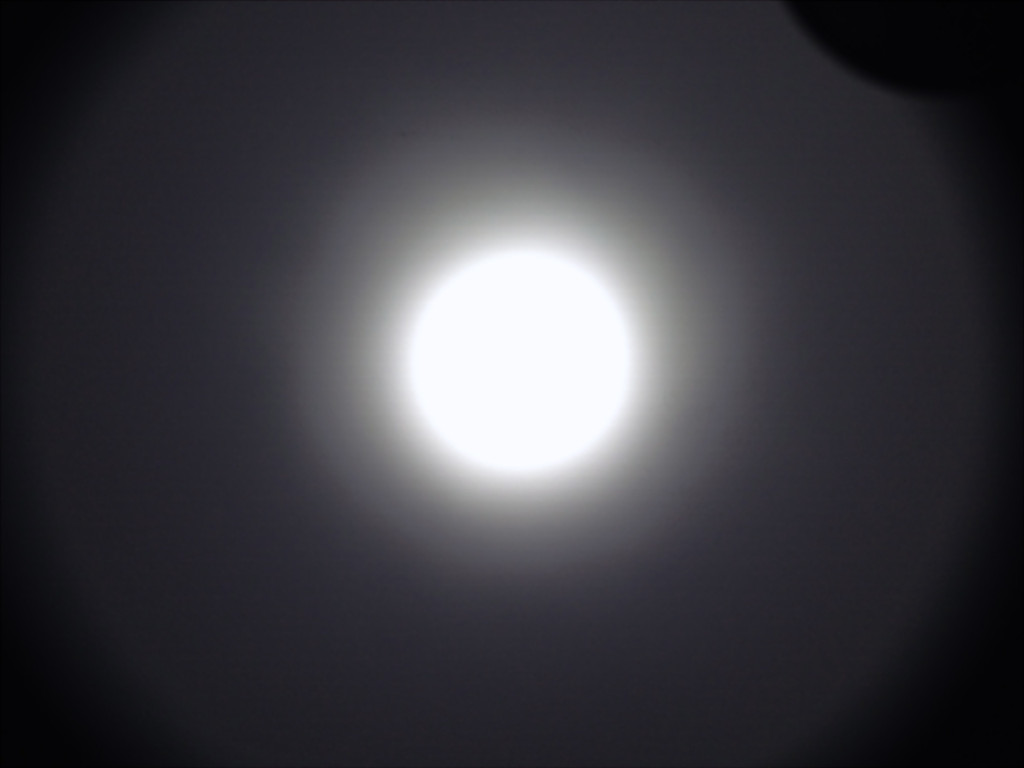
The beam itself is great, not that that’s unique to the T1. Most quality, modern, LED flashlights and weapon lights have really nice, consistent beams these days. The T1’s beam is very smooth, with no spots or artifacts in it. The center spot is pretty defined, but fades smoothly into the outer flood, and measures about 30 inches wide at 10ft. The outer flood is very broad, providing greater peripheral illumination.
Function
There are two schools when it comes to the on-off function of a tactical flashlight. Some prefer a click button, with a half-click temporary-on, and some prefer a twist cap, where you twist for on, and press the rear button for temporary-on. The T1 is first and foremost of click-button design, but it does a very good job tailoring to the twist cap crowd. Normally the T1 works as follows. For on, you can lightly press the button for temporary, or click it for constant. If you want the low setting you momentarily depress the button, then press it again within a second for low. If you press a second time within a tenth of a second, it will toggle strobe mode, in which the light will strobe on high. This can be used for signaling or for disorientating someone. It’s definitely effective at the latter, though I’m of the mind that you’d be unlikely to think to strobe at someone if you actually needed to.
If you prefer a twist cap, you can do the following. If you click the light on, you can then twist for off. Twisting 15 degrees from fully tightened will turn the light off, between 15 and 75 degrees from tight, you can press the rear button for temporary on, or twist for constant. The only difference between this and a light made for twist operation, is that if you press the button too hard you can click it off, rendering twisting useless. You have to press it pretty far to do this, so I really don’t think it would be likely even in a tense situation. Just my two cents.
Tech Stuff
Two 123A lithium batteries power the T1 (compared to one AA for the X1, if you’re wondering). Those batteries will last a whopping 4 hours on high, and 47 hours on low. The second figure isn’t surprising, but the first is abnormally long for a light of 200+ lumens, powered by two 123A cells. Supposedly the light will retain 70% brightness or better past 3.5 hours, before falling off quickly. This is nearly double the runtime of its SureFire competitor, which puts out 200 lumens on the same batteries.
While we’re on the topic, a lot of people are put off by the 123A batteries, thinking they are uncommon specialty batteries. I’ll grant that they aren’t AAs or AAAs but if they’re available at Walmart, they’re hardly rare. They’re also not expensive when compared apples to apples. An 8 pack of Energizer Lithium AAs is about $14 online and lithium AAs have less stored power than 123As. Comparatively, a 12-pack of Streamlight 123As
is about $18.50. The 123As are less money per battery.
With o-rings and a teflon-sealed lens, the T1 is essentially waterproof, so long as you don’t deliberately submerge it. Its IPX4 rating technically means that it can be thoroughly wet from all angles, but should not be submerged. You can be sure rain and spray will not phase it, and if you were to drop it in a puddle you wouldn’t have to worry. Drop it in a pool and it might not be too happy with you if you don’t retrieve it immediately.
Competitors
The T1’s primary competitors would be models from tactical flashlight makers, SureFire and Streamlight. As far as the companies are concerned, I find that SureFire products are generally overpriced for what they are, but they do have an edge in overall toughness. If you use a light as part of your regular job, you might consider a SureFire, but for EDC for the average person, all their products are overpriced, from flashlights to weapon lights. Streamlight makes my favorite weapon light, but for EDC I don’t think their products stack up to the quality and refinement of Inova’s offering. If you really needed something with a belt clip, I’d say go Streamlight, but otherwise it’s the T1.
The Streamlight Protac Tactical 2L seems like the closest competitor for the Inova T1. It is the better part of an inch longer, but is a little thinner with a clip (ideal dimensions for if you want to clip it on the inside of your pocket, rather than sitting at the bottom, as I prefer). Overall the PT 2L is a slightly more tactical design with a higher IPX7 water rating. It is a little cheaper than the T1, but lacks 30 lumens by comparison, with just a 10 lumen low mode. It also has a run time 90 minutes shorter.
SureFire’s 6PX Defender is their clear competitor to the T1. Overall it is definitely the most tactical of the three, but it is bulkier, less bright, and has an even shorter run time than the Streamlight. Unless you’re anticipating a need to hit someone in the face with your flashlight, I’d look at this flashlight last at $40 more than the Inova.
Fighting
As I generally like to, when giving advice on tactics and/or fighting with a gun, I’ll start with a disclaimer. I am well versed in this topic, but I am not an expert. Make sure you get professional training and take what I say with a grain of salt. Also make sure you know your local laws on this topic, as they vary greatly.
When someone, of a different mind than I, realizes that I always carry a flashlight, they often ask why. My two reasons are always ‘general purpose’ and ‘to pair with my gun.’ Without fail the next question is always, “Why don’t you just have a light on your gun?” To that I answer, “What would yo do if you asked me to borrow a light real quick and I whipped out my Glock?” Not only is a gun with a light a pain for concealed carry, but on that rarest of rare occasions that you need a flashlight without needing your gun, you’ll be SOL. I’m a firm believer in using lights mounted on your defense gun, but it isn’t practical for concealed carry. For EDC, you want a bright, pocket/belt-carried tactical light, which can be employed solo or along with a weapon.
Lets start with basics. If you might need to employ your light in a fight, mini lights like the X1 are out. You need a tactical light like the T1, which allows for a full grip. That light also needs a lanyard. Lanyards are nice in general, as they make the light easier to fish from your pocket, and give you a little extra security in a dynamic situation. In a fight though, they’re pretty essential, as there’s a good chance you may need to use your flashlight hand in a hurry. The Inova T1 doesn’t come with a great lanyard, as I’d imagine a 20lb tug would break it. Instead I used a length of Type III 550lb Paracord, which I cinched with a two-strand diamond knot. This knot gives a much nicer look, while being very secure. It is also a larger knot than a standard two-strand overhand knot — a good thing for this application.
So… you’ve got a good tactical flashlight, and your lanyard has a fancy pants knot. Now what? Lets say your walking down the street and you have become aware that someone has been matching pace and direction with you for a while. You cross the street and after a minute they follow suit. You speed up and they match pace and direction. You know something’s up.
Now you turn and make eye contact to indicate that you’re not unaware of their presence. You change direction again and they match you. Now you turn to ask if they’re following and they advance towards you with a threatening posture. By this time your flashlight should be in hand already and you might even consider a hand on your gun depending on the perceived threat level. You turn on the flashlight and aim it in their direction with the flood area of the beam over their face (not the center spot). At this point your flashlight will seem fairly bright to them, and you will start reducing their night vision. You would now issue a strong warning to stay away. If they don’t comply, move the center of the beam to their face to completely obscure their night vision. If you can coordinate it, this would be a good time for a strobe mode.
Now that you’ve escalated as far as you can using the flashlight to both identify the threat and impair their vision, it’s time to draw your gun. If you have a method of escape, that should be your first choice, unless the threat has presented a weapon. If there is a weapon or you are unable to retreat (or if you feel you are in danger of great bodily harm and are protected by stand-your-ground laws, as we are in New Hampshire), it’s time to fight. When you initially drew your weapon, it should have moved to a one-handed, high-compressed ready position at your chest, with the muzzle aiming down and to the side. Your flashlight should be in a tactical grip, also at your chest. If you are going to engage the threat, press out with the pistol, but keep your light at your chest. People commonly like to mimmic the movies here, by crossing the flashlight hand under the wrist of the shooting hand. I don’t find this to be very stable, but there are two other reasons that you should keep the flashlight to your chest instead.
The first reason is OODA loop (Google it). When we shoot one-handed, we place the other hand at our chest. This keeps your weight tighter into your body, aiding movement, and ensures that your hand is out of your field of fire. It also leaves the hand in the place that the gun will come back to after shooting, allowing you to secure the gun with two hands. Thinking about OODA loop, it is very important that no matter what we’re doing, we do it the same way every time. No matter why you’re shooting with one hand, your other hand should be at your chest so your brain doesn’t have to hang up on deciding where the hand should be, slowing your action.
The second reason is light. Even with tritium night sights, you may find them hard to see at night when your adrenaline is pumping and your vision narrows on your target (even experienced shooters usually report having never seen their front sight when they ended up in a gun fight). Keeping the light at your chest will allow it to illuminate your front sight. You should also be tilting your gun at a 20-45 degree inboard angle during one-handed shooting. This gets your sights into line with your eye, and will also help expose them to the light for better illumination.
With a bright light with a lanyard, you should also have the ability to let go of the light for a two-handed grip. The refracted light off the ground and yourself should be enough to keep the threat visible enough to aim at. Dropping the light to the lanyard will also come in handy if you need to reload while fighting with a flashlight.
A whole series of articles could be devoted to the tactical use of a flashlight for searching and fighting, but I’ll leave you with the basics for now. Just remember that just because you saw it in a movie, doesn’t make it accurate. Take a training course that covers low light shooting and the use of a hand-held light, and for fuck sake, PRACTICE. Even if you have to practice during the day, just get used to drawing and shooting with a light in hand.

